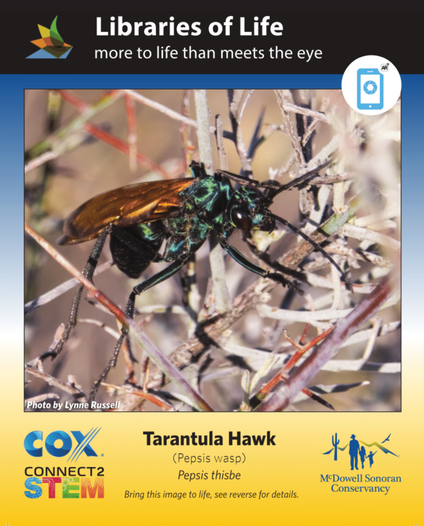TARANTULA HAWK: Did you know?
|
|
Tarantula hawks, or Pepsis Wasps are amazing creatures with very interesting stories! Here are some fun facts about them. Tarantula hawks are actually a wasp. They are in the order Hymenopetra, which also includes bees and ants. However, wasps are a different family from bees, and you can tell them apart because bees are usually harrier, have shorter lets, and have thicker bodies. Wasps have a thin “waist”, longer legs, and much less hair. Tarantula hawks are solitary, meaning that they do not live in groups. There are more than 12 different species living in the Sonoran Desert. We have at least 2 different species living in the McDowell Sonoran Preserve. The most common one is Pepsis thisbe, which has bright orange wings. Tarantula hawks get their name because when the females are ready to lay an egg, they seek out a tarantula spider and use the venom in their stinger to paralyze it. After that they drag the paralyzed tarantula to a hole in the ground, and lay a single egg in the spider’s abdomen. The eggs hatch, eat the tarantula, and go on to live their lives as the next generation of tarantula hawks. Sound gruesome? Tarantula hawks actually eat nectar for most of their adult lives, visiting flowers to gather the nectar just as honeybees do. The female tarantula hawks are the only ones that sting. You can tell the females and males apart because in most species, the males have straight antenna and the females have curly antenna. Also, the females are the only ones with stingers. Females are also larger than the males! Tarantula hawks, like many other flying insects, help pollinate flowers. We need pollinators! Without them we don’t have flowers and many of our foods such as fruits, vegetables, and plants that we use for medicine. |

